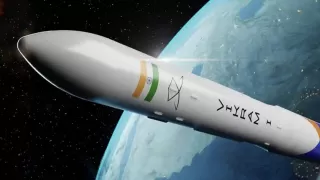Indian space agency ISRO has said that Aditya-L1 has covered a distance of more than 9.2 lakh kilometers from the Earth. The spacecraft has now successfully left Earth's sphere of influence. Now it is moving towards Sun-Earth Lagrange Point 1 (L1). ISRO shared an update regarding Aditya-L1 mission on Saturday 30 September.
This is the second time that ISRO has succeeded in sending a spacecraft outside the Earth's sphere of influence. Earlier, ISRO had sent Mars Orbiter Mission on 5 November 2013.
Trans-Lagrangian point 1 was reached on 19 September.
ISRO inserted the Aditya L1 spacecraft into Trans-Lagrangian Point 1 at around 2 am on September 19. For this the thrusters of the vehicle were fired for some time. Trans-Lagrangian point 1 insertion means sending the vehicle from Earth's orbit towards Lagrangian point 1. From here the spacecraft started its journey of 15 lakh kilometers. The spacecraft will reach L1 point after 110 days in January 2024.
Aditya L1 was launched on September 2

Aditya L1 was launched on September 2 at 11.50 am from the Satish Dhawan Space Center in Sriharikota using the XL version rocket of PSLV-C57. 63 minutes and 19 seconds after launching, the spacecraft was placed in Earth's 235 Km x 19500 Km orbit. After this, the spacecraft's orbit was increased by firing its thrusters 4 times.
Aditya L1 started collecting scientific data
Earlier on September 18, ISRO had said that Aditya L1 has started collecting scientific data. The Supra Thermal and Energetic Particle Spectrometer or STEPS instrument installed on the spacecraft was activated on September 10, 50,000 kilometers away from Earth. With the help of data, information about storms arising on the Sun and space weather will be available.
The STEPS instrument is part of the Aditya Solar Wind Particle Experiment or ASPEX payload. STEPS has six sensors. Each sensor observes in different directions and measures supra-thermal and energetic ions ranging from 20 keV/nucleon to 5 MeV/nucleon, in addition to electrons greater than 1 MeV.
Orbit was increased on 3, 5, 10 and 15 September
ISRO raised the orbit of Aditya L1 for the fourth time at around 2:15 pm on September 15. Its shortest distance from Earth was 256 Km, while its maximum distance was 1,21,973 Km. ISRO raised the orbit of Aditya L1 for the third time at around 2.30 am on September 10. Its minimum distance from Earth was 296 Km, while its maximum distance was 71,767 Km.
The orbit of the Aditya L1 spacecraft was raised for the second time at 2.45 pm on September 5. Its shortest distance from Earth was 282 Km, while its maximum distance was 40,225 Km. For the first time, ISRO scientists had increased the orbit of Aditya L1 on September 3. Its shortest distance from Earth was 245 Km, while its maximum distance was 22,459 Km.
Know the journey of Aditya L1 in 5 points

The PSLV rocket launched Aditya into an Earth orbit of 235 x 19500 Km.
Will remain in Earth's orbit for 16 days. Will increase orbit by firing thruster 4 times.
Again Aditya's thrusters will fire and it will move towards L1 point.
Aditya Observatory will reach near this point after a journey of 110 days.
Aditya will be placed in the orbit of L1 point through thruster firing.
What is Lagrange Point-1 (L1)
The Lagrange point is named after the Italian-French mathematician Joseph-Louis Lagrange. It is colloquially known as L1. There are five such points between the Earth and the Sun, where the gravitational force of the Sun and the Earth gets balanced and centrifugal force is created.
In such a situation, if any object is placed at this place, it easily starts revolving around that point. The first Lagrange point is at a distance of 1.5 million kilometers between the Earth and the Sun. There is no effect of eclipse on this point.
Aditya has 7 payloads:

PAPA i.e. Plasma analyzer package for Aditya: Will study the hot winds of the Sun.
VELC i.e. Visible Line Emission Coronagraph: Will take high definition photos of the sun.
SUIT i.e. Solar Ultraviolet Imaging Telescope: Will take photos of the Sun in ultraviolet wavelengths.
HEL10S i.e. High Energy L1 Orbiting X-ray Spectrometer: Will study high-energy X-rays.
ASPEX i.e. Aditya Solar Wind Particle Experiment: Will study alpha particles.
MAG i.e. Advanced Tri-Axial High Resolution Digital Magnetometers: Will study magnetic fields.
Why is study of Sun important
The Sun is the center of the solar system in which our Earth exists. All eight planets revolve around the Sun. There is life on Earth only because of the Sun. Energy flows continuously from the Sun. We call these charged particles. By studying the Sun, it can be understood how changes in the Sun can affect space and life on Earth.




























